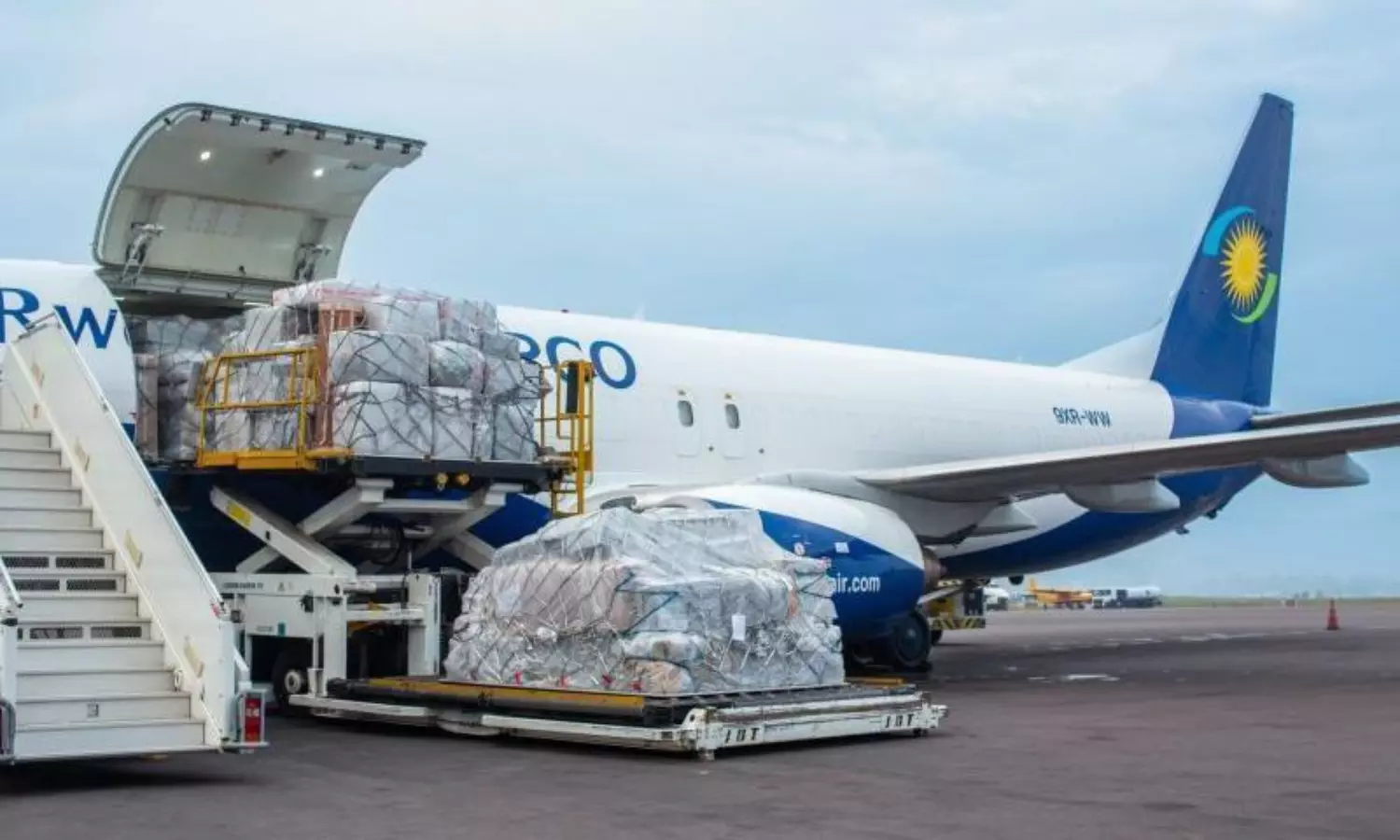Global air cargo volumes up 4% in October as trade signals weaken
Falling Europe–North America demand and lower rates may impact Africa’s exports despite steady global growth.

Global air cargo volumes rose by 4% in October compared to the same month last year, according to Xeneta. The increase was stronger than expected but came alongside warnings of a slowdown in global trade, with Europe–North America volumes falling 6%. Analysts said this drop could be a sign of weaker trade activity worldwide, a trend that could affect Africa’s growing air cargo sector which depends heavily on international demand.
Xeneta’s latest market data confirmed its earlier forecast of 3–4% growth in airfreight demand for 2025. However, the company noted that the market is shifting in favour of shippers, with freight rates and yields continuing to fall. Global spot rates dropped 3% year-on-year to $2.58 per kilogram, while longer-term contract rates fell even faster by 8% to $2.31 per kilogram. These lower rates reflect cautious market sentiment among freight forwarders and airlines.
Niall van de Wouw, Xeneta’s Chief Airfreight Officer, said that while the overall growth was stronger than expected, the 6% decline between Europe and North America is a “harsh signal” for the wider market. He added that demand growth continues to trail behind capacity, which rose 5% year-on-year in October. This imbalance between supply and demand has kept downward pressure on freight rates and profits.
Across key trade routes, peak season growth remained weaker than usual. Airfreight demand from Asia Pacific to Europe rose 11% in October compared to August, lower than the 16% growth seen a year earlier. Spot rates increased by 5%, below last year’s 9% rise. These figures point to a softer peak season for the global cargo industry.
E-commerce continued to be a major driver of airfreight between Asia and Europe. According to China Customs data, e-commerce exports from China to Europe surged 62% year-on-year in September, doubling last year’s growth rate. This was in sharp contrast to China-to-US e-commerce volumes, which fell 34% in the same month, the fifth straight monthly decline.
As freighter capacity moved from the Transpacific to Asia–Europe routes, spot rates from Northeast Asia to Europe slipped 5% year-on-year, a smaller fall compared to the double-digit declines on Asia–North America lanes. Between August and October, rates on Northeast and Southeast Asia to Europe routes rose 6% and 7% respectively, while rates on Transpacific lanes showed little improvement.
Van de Wouw said that freight forwarders are now placing greater focus on cost savings as revenues come under pressure. He expects competition for market share to intensify as companies try to protect margins in a weak demand environment. “You need to mind your costs more than when you’re supporting growth,” he said. “We are seeing cost reduction announcements across the industry, and that will continue.”
He added that the current market is becoming more favourable for shippers. However, lower freight rates will only be an advantage if product demand stays strong. He noted that most shippers would prefer higher freight costs with higher sales rather than lower costs and weaker sales.
Van de Wouw also said that airfreight has benefited temporarily from tariff-related disruptions and global economic uncertainty. But as these effects fade, growth in general freight is expected to remain limited. “The industry is being reminded that there is only limited growth in the general freight market, and that is causing lower expectations for 2026,” he said.
For Africa, these trends offer both opportunities and risks. Lower global freight rates could make exports from the continent more competitive, especially for perishable goods such as flowers, fruits, and seafood moving to Europe and the Middle East. However, slower global demand and reduced trade on major routes like Europe–North America may affect the overall flow of goods, limiting the uplift in cargo capacity and connectivity for African exporters.


